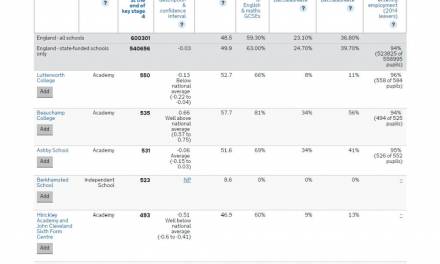Progress 8 was launched amid a flurry of educational sector changes; for years, teachers and school management have done battle with all sorts of metrics, and the balance between the focus on grades and what’s best for the pupil.
There were positive expectations when Progress 8 was introduced back in August 2016. Some seven months on, we look at what this change has meant for the educational sector, and moreover, what it has meant for vocational learners who had previously been relatively overlooked by the old system.
“The Progress 8 measure is designed to encourage schools to offer a broad and balanced curriculum at KS4, and reward schools for the teaching of all their pupils”.
Positive steps
Introduced to replace the focus on pupils gaining C grades or above in 5 core GCSEs with a new value-added metric, Progress 8 has been heralded as one of the few truly welcome changes in recent years.
The core benefit of this transformation of ranking could be said to be the power and flexibility that it grants to schools. No longer are they to be judged on academic subjects alone (a ranking system that many have argued against for years); today, schools can place more focus on vocational subjects (an extensive list of which can be found here).
Ultimately, this allows for the ideal situation where every student can play to their strengths if the school creates a curriculum that offers the broad choice that Progress 8 was designed to encourage.
A further advantage in this respect is also in relation to SEND students – as Progress 8 empowers them to choose subjects that hold both relevance, long-term life chances and individual interest.
Further changes Progress 8 has brought about have somewhat re-balanced the focus and time spent on students. Where previously C/D borderline students were granted attention in an attempt to make the most significant ‘wins’ for ranking (and let us not forget, ranking means funding), today this practice is defunct.
So, the question is, whether it’s achieved all that it set out to.
And the results are in
The very first sets of data on the success or otherwise of Progress 8 have been released – and, perhaps most notable about the figures, is that attainment scores are up, and have been directly attributed to the increase in more EBacc pupils. English and maths attainment has also improved.
However, less welcome is the clear regional divide in performance. Whilst Progress 8 has been lauded with much praise (especially relative to other educational changes) it appears that there could still be room for improvement.
“Schools in poorer areas still face a significant social gradient, in Progress 8, points mean prizes. But it’s not going to be hard for schools in affluent areas to get a positive Progress 8 score. Will they be doing a good job? Probably not”
Perhaps unsurprisingly, the initial results also show that selective and (most) faith schools have higher levels of attainment than mainstream schools, and girls are achieving higher grades across the board.
Has Progress 8 improved outcomes for your pupils? Do you think that socio-economic factors have had an impact on attainment in your setting?









